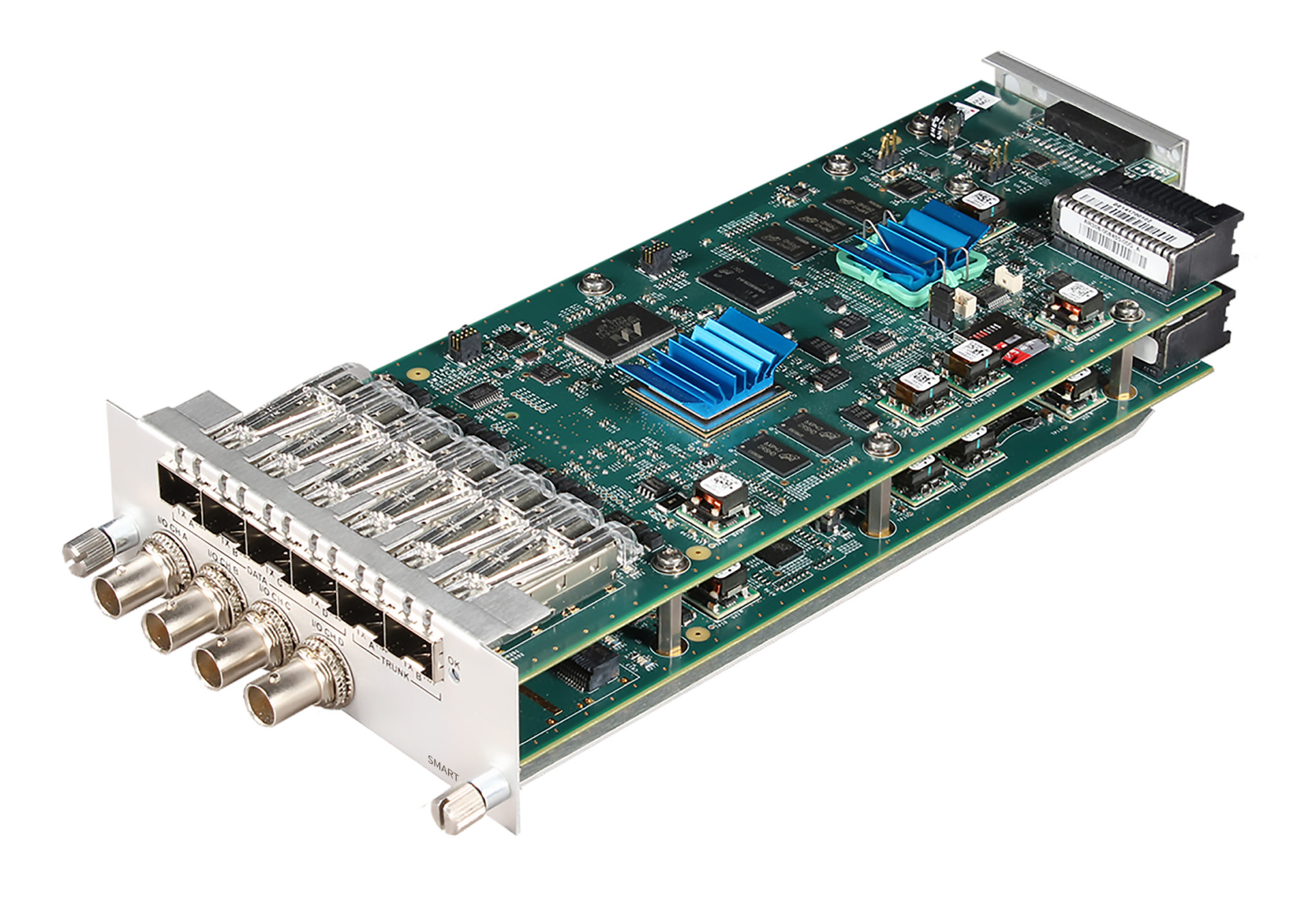IP networking has opened up possibilities for software and platforms not traditionally found in broadcast — such as switching and routing, asset management, and transcoding video for viewing on different mobile devices, editing platforms, and search engines. But while IP produces opportunities for creativity and innovation, it is also inherently more complicated than traditional networking … and thus potentially more costly from an operational perspective. Broadcast workflows and the inherent speeds/bandwidth of the content require real-time processing. In the past this could only be accomplished with specifically built hardware that is not reprogrammable — resulting in operational complexity for broadcasters that must change their environment’s functionality on a case-by-case basis.
This creates a dilemma for broadcasters that want to innovate but are always striving to save money, either by reducing waste, reducing effort, eliminating functions, or a combination of the three. Recent advances in the processing power of programmable components creates an opportunity for functional flexibility. To take advantage of IP, broadcasters need an easy way to leverage its power and flexibility while keeping operational costs down.
Say Hello to the Artel SMART Media Delivery Platform.
Artel’s solution sits at the confluence of three trends: the advent of software-defined functionality, the migration to IP workflows, and the ever-present need to reduce operational costs.
By addressing all three of those trends in one card, our SMART Media Delivery Platform counteracts the complexity while giving broadcasters a simple way to integrate IP into their operations. And simplicity can mean lower costs.
The SMART platform is essentially a media-over-IP gateway used mainly in contribution workflows or in video transport applications. It is a card that comes in either our DigiLink/InfinityLink form factor or in an openGear form factor. In both cases, the card(s) goes inside those chassis or frames as part of an overall solution. We call it a “platform” because the SMART technology inside any of those form factors is the same. It allows you to deploy features very easily across cards simply by programming the platform.
For example, broadcasters have used SMART to transport video from a main broadcast station to affiliates. Others have deployed SMART in contribution workflows in stadiums, transmitting live video from the venue to broadcast facilities. It is also being considered for deployments in OB trucks/vans for live sports. On the service provider side, telecom providers have been testing it to transport video to local hubs for eventual programming distribution.
In those scenarios and many more, users can monitor, control, and provision the SMART platform using element management or network management systems via northbound interfaces. In fact, the ability to program functionality remotely using software is one of SMART’s most important characteristics.
Traditionally, functionality is attached to hardware. For example, if the solution was transporting uncompressed video, and you wanted to change to compressed video, technicians would have had to physically swap modules or cards to reflect this change, which can be time-consuming and costly. This also means you must keep an inventory of cards/modules and all the possible functions you envision using. All cards/modules must have a one-to-one correlation with all the different pieces of hardware they work with. Different functions require different pieces of hardware.
But because of SMART’s software-defined nature, you need only install hardware once and then use software updates to change the gateway’s functionality as needed. The platform can take on the following personalities without changes in hardware: JPEG2000, JPEG-XS, SMPTE ST 2022-7, SMPTE ST 2110 ingestion, SMPTE ST 2022-1/2/5/6, and HEVC.
The Biggest Benefits — Simplicity Breeds Savings
SMART responds to the need for operational simplicity, flexibility, and ubiquity during the industry’s migration to IP. Because SMART is a software-defined platform, there is no need to replace cards to change functionality. Instead, you can use software to program a high degree of functionality and support a high density and capacity of video channels, which reduces power consumption, cabling, and space.
The SMART platform also allows for automation, reduces inventory (as you only need one module, which can take different personalities), eliminates the need to physically remove equipment, and provides for fast provisioning of new functionality.
For more information visit https://www.artel.com/media-transport-products/?swoof=1&product_cat=smart-media-delivery-platform.

